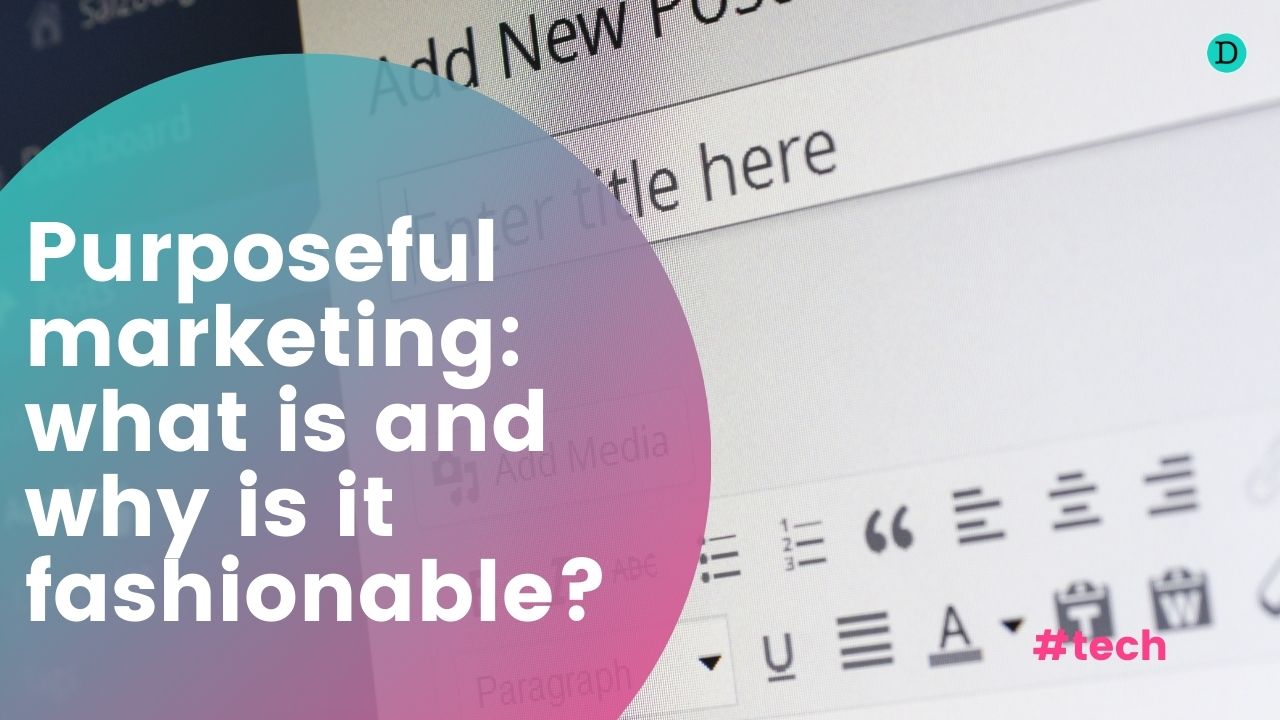
Digital Marketing Manager
Sensorial marketing is a set of strategies that, without being aware of it, constantly surrounds us.
When it comes to marketing, most people think of advertising campaigns behind new products, social media management or crocheted slogans that help brands boost revenues.
The truth is that marketing involves a myriad of exciting strategic and operational actions. This is certainly the case of sensorial marketing.

The ability of some brands to play with the senses and achieve an astonishing identity and recognition through perceptions leaves any marketing enthusiast speechless.
Sensorial marketing is a very difficult technique to apply as it requires great strategy and sometimes, not all efforts bring the expected results.
However, if a brand manages to sticks the consumer’s mind, it can be there perpetually.
What is sensory marketing?
índice

Sensorial marketing encompasses a series of strategic decisions focused on stimulating the consumer’s senses.
This concept works alongside neuromarketing, where sensations and perceptions provide clues about the mental processes carried out by the consumer in the purchasing process and the way in which stimuli affect their behavior.
Companies use sensorial marketing at the point of sale where, through pleasant environments and appropriate stimulations of each of the senses, it can increase purchase time and even make a customer want to buy the product.
In recent years, it is a concept that has become popular because of the way in which the consumer connects with the brand and penetrates the subconscious.
Brands try to create a bond with the consumer through perception, memory, learning, emotion and reason, so that the customer’s choice to buy the product does not only come from the most obvious benefits but also from a feeling he or she develops towards the product.
Sensorial marketing, briefly, tries to understand the subconscious factors such as desires, thoughts, feelings or motivations that ultimately influence the purchase of a product.
Within marketing efforts, olfactory, visual, tactile, sound and taste marketing are taken into account.
Smell
Smell is the sense most closely related to memory and therefore plays a fundamental role in brand recognition.
First, we capture the intrinsic experience of the smell and then they connect the smell to the context, whether it is a product, a brand or a shop.
As with natural smells, fragrances also play an important role in this regard and many companies are committed to this.
When the user perceives a fragrance, there are three distinct phases.
Firstly, between the first 30 seconds and 15 minutes, our sense of smell gets a first impression of the perfume. Here it is possible to distinguish whether the scent is pleasant or not.
Then, during the next few minutes, the user is able to get a sense of the personality of the perfume through the main ingredients of the fragrance.
Finally, after 2 hours, we received the base of the perfume, which reaffirms the identity and character of the perfume.
Sight
Sight is one of the most important senses as 80% of consumers recognise the brand by its colors and in 85% of customers, it is the trigger for the purchase decision.
In addition, in different cultures, they associate colors with meanings or moods.
In Western culture, for example, yellow is synonymous with happiness, red represents passion and green is associated with nature.
For this reason, companies usually use sight at the point of sale, although the other senses complement the ambience of the establishment.
Touch
Touch, on the other hand, is one of the least used senses due to the difficulty of establishing marketing strategies through it.
It is true that for certain products, the possibility of checking the material or its quality is fundamental for the purchase decision, as in retail, especially as many people are still reluctant to use e-commerce due to the impossibility of checking the garments by touch.
In spite of this, touch is decisive in evaluation even in online experiences where consumers feel more comfortable and closer to the product with touch screens than using a mouse.
Hearing
The importance of sound in the purchasing decision is so significant that experts have developed strategies such as music branding or sound marketing.
Sounds are capable of altering our mood, energy levels and even our physiological systems.
From a neuromarketing point of view, auditory memory stores information related to experiences.
In addition, user’s previous emotional state, personality or interests can also influence on the experience.
Taste
In the almost 10,000 taste buds that humans have in their mouths, we can appreciate 4 primary sensations: sour, sweet, bitter and salty.
This sense is difficult to use because not all products can be tasted.According to this, brands only use taste in the food and hospitality industry.
To achieve a perfect gastronomic experience, it should be a combination between taste and other senses such as sight through visual presentation.
How to implement a sensorial experience strategy?

With the wide range of products and services on offer, it is hard to reach customer satisfaction with the item itself, so they demand an experience that they can live, touch, smell, taste and listen to during the purchase process.
Companies have seized this opportunity to use sensory marketing and the emotions it appeals to in order to make their brands memorable in the consumer’s mind.
Sensorial marketing is novel and creative, it touches the emotional side and allows to create a strong brand identity in the subconscious of customers.
Anyone would be able to distinguish the red color of Coca-Cola or identify a shop just by its smell.
It is true that creating a brand identity through the senses is no easy task, but if you succeed, your brand will remain forever in consumers’ brains.
Depending on which sense we want to appeal to, marketing efforts will vary.
Visual marketing
This type of marketing is undoubtedly the most popular, regardless of the sector.
Visual marketing is the perfect option to use at the point of sale, either with the decorations, the shop windows, the colours used, the layout of the establishments, the packaging, etc.
However, this is not all. Online presence is essential nowadays and it is visual marketing too.
To do visual marketing in a digital environment you have to focus on attracting the customer in the first few seconds.
Being able to differentiate yourself in such a way that the user knows how to identify your company almost immediately in any of your visuals is synonymous with success.
In order to do visual marketing you must firstly have a good graphic identity, in other words, you must give great importance to the branding, logo, typography and colour as well as the slogan.
This will be the first step to be remembered through sight.
A web design is also essential in an online environment and should be adapted to the business concept.
Your website should be like your physical shop, captivating the user at the first impression.
The images you use will be decisive as well as the use of dynamic, persuasive content, call to action, videos and banners.
Scent marketing
As we have already mentioned, developing a scent marketing strategy is a challenge in some sectors.
While a perfumery may have a head start, other shops find it difficult to position themselves through smell.
Most brands that use scent marketing develop a specific scent that will be perceived by the customer when they enter the shop.
In many occasions, users end up recognising the brand even when they taste a similar smell.
Companies also use scent marketing in digital marketing, and you may be wondering how?
Well, some companies have developed lead acquisition strategies using smell. It consists of the customer exchanging their email for a free sample of smells.
Sound marketing
When we talk about sound marketing, you may think of background music in shops, and in fact this is not a misguided idea.
It is true that in-store music greatly affects the purchase decision, but this is not the only use for sound marketing.
Many brands use sounds, pronunciations or tones to ensure that they last in the consumer’s memory.
An example of this are the sounds emitted by applications when they open or receive a message, the credits of games, or even the use of audiobooks or podcasts.
This type of marketing is very interesting because it is easy to reach people.
As you can see, in your daily life you meet thousands of people wearing earphones, whether on public transport, walking down the street or even shopping.
All these users are reachable people that you can approach to communicate your message and sell your product or service.
Taste marketing
Taste marketing is the favorite marketing method for restaurants, supermarkets or any brand related to edible products.
And how do you do taste marketing? By offering free food samples.
In supermarkets we have seen this repeatedly, when they let you taste products to increase sales.
This is also the case in restaurants where you can taste wine before you order it.
But there is also another variety of taste marketing in the online environment and it is email marketing in the form of free samples for customers with the condition of subscribing to the newsletter or offering offers so that they come to the establishment.
Finally, there are brands that, although their products are not edible, use edible products to surprise customers, such as sweets, candies, drinks, etc.
Touch marketing
At first glance, touch does not seem to be an easy sense to use for marketing.
You may be thinking only of clothing shops where the quality of materials or comfort are crucial to increase sales, and they are.
However, you don’t necessarily need textile products to use touch marketing.
At other times, you can develop touch-based marketing strategies such as using touch-friendly materials on product packaging or business cards, using sustainable materials or incorporating high-quality packaging to make the customer feel that the product is new.
The most successful sensory marketing campaigns

Before talking about successful and original sensory marketing campaigns, we should know that when it comes to establishing strategies, marketing can be focused on a single sense or on several senses.
Depending on the service offered, the industry, the product and other internal and external factors, one strategy or another will be implemented.
Ford Focus
One of the most striking cases is the strategy of Ford Focus with its “New Smell” perfume.
Ford Focus decided to launch a perfume that simulates the smell of new cars as soon as they leave the workshop and use it on second-hand vehicles.
Milka
Milka carried out a marketing campaign that was simultaneously experiential and sensorial in which a Milka cow was placed on the street and a few meters away from it a vending machine.
The only way to get a chocolate bar was by simultaneously touching the cow and the vending machine, which required the help of strangers who by creating a human chain would get free chocolate bars.
Once this was achieved, the typical Milka song would play and the chocolate bars would come out, thus creating a sensorial marketing both auditory and in terms of taste.
Wimpy Braille Burgers
If tactile marketing is difficult to implement, the company Wimpy simplified it with a very original idea.
The company decided to create a message for blind people by using sesame to simulate Braille.
Through 15 burgers, blind people were able to touch and read the message on the bun of the burgers, creating magical and unforgettable reactions.
Dunkin Donuts
Dunkin Donuts also wanted to get involved in sensory marketing and did so with a multi-sensory campaign in Korea.
The aim of the campaign was to increase coffee sales, as the brand was better known for its doughnuts than for its coffee.
Thus, the company placed coffee-scented diffusers on buses that only spread the smell when the jingle was played on the radio.
This was combined with advertising on the bus stop shelters and in the Dunkin Donut’s shops next to the bus stops.
As a result, users had a sensory bombardment in their subconscious that increased shop visits by 16% and sales.
Abercrombie & Fitch
Finally, one of the most successful sensorial strategies in the textile industry was the emergence of the Abercrombie & Fitch brand.
Abercrombie & Fitch decided to target all the senses and create an experience every time someone entered the shop.
The brand’s strategy was to focus on pre-teens and teenagers and create a 360 experience aimed at them.
Just before entering the door, shirtless models with athletic bodies were there for you to take a photo with and receive it in polaroid format.
In addition, the music was characteristically loud and the lighting very low, creating a subdued ambient.
The decoration was also far from conventional, simulating a Californian shop, with surfboards, different arrangement of the displays and even mannequins with different poses.
Possibly the great hallmark of the brand was the smell.
All Abercrombie & Fitch shops around the world used the same fragrance for their shops to such an extent that other brands decided to imitate the same scent.
The bags were also distinctive as they invited you to consume only to walk out of the mall with your laminated cardboard bag with pictures of models and surfers and fabric handles.


